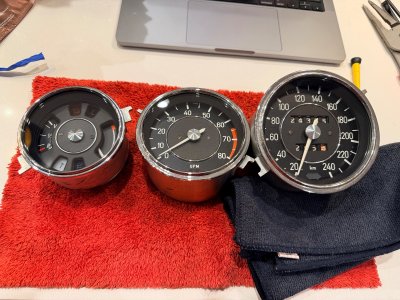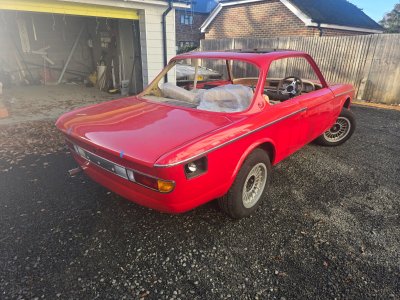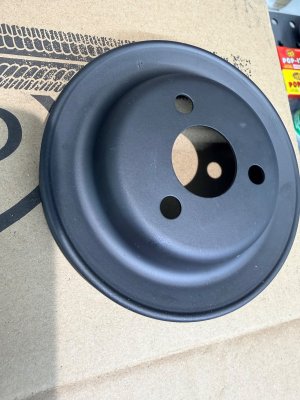I replaced the seal for the fuel level sender in the gas tank and stopped the smell. Got if from the dealer. I'd start there, it didn't cost much.Moved it as far from our boxes of random stuff and luggage as possible since it exudes an odor of oil and fuel that not everyone in my household loves
You are using an out of date browser. It may not display this or other websites correctly.
You should upgrade or use an alternative browser.
You should upgrade or use an alternative browser.
What did you do to your E9 today?
- Thread starter adawil2002
- Start date
And be sure you have the plastic sleeve/reducer that goes from 8mm to 6mm on the sender.
Took out all of the gauges and removed bezels, polished glass and reassembled in preparation for adding some LED lightbulbs. A bit of a job but there is a nice write up on the forum and the end result is well worth it. I think getting all four of the gauges out without dash removal was the most challenging part
Attachments
Took out my ancient starter and replaced it with a new one. Along the way removed a bunch of hoses, which will be changed as well. Boy, taking out that starter is a job I don’t envy anyone having to do. That thing is way down in there and those bolts are quite difficult to remove. The new starter is thankfully a little bit more svelte so if anyone ever needs to go here again, it should be an easier job.
its also a whole lot lighter ... which takes a load of awkwardness out
Bought another to keep myself busy.
Lots of fresh parts to go back on, but some cool bits. Csl panels, dogleg, bilsteins and all the hard stuff has been done. Keeping this quite simple with a B35 swap. Now to build up in between customer jobs.
Lots of fresh parts to go back on, but some cool bits. Csl panels, dogleg, bilsteins and all the hard stuff has been done. Keeping this quite simple with a B35 swap. Now to build up in between customer jobs.
Attachments
Nice color. Do the fresh parts to go back on include a Webasto folding sunroof? Or is what appears to be an open top just an illusion?Bought another to keep myself busy.
Lots of fresh parts to go back on, but some cool bits. Csl panels, dogleg, bilsteins and all the hard stuff has been done. Keeping this quite simple with a B35 swap. Now to build up in between customer jobs.
Yep, webasto really isn't my first choice but didn't really have much of a say in the matter. At least fitting of it was done correctly at the time. Too much hassle to weld the skin back on etcNice color. Do the fresh parts to go back on include a Webasto folding sunroof? Or is what appears to be an open top just an illusion?
Nothing as exciting as buying a new one…spent an hour with some degreaser and a brush slowly starting to clean 50 years of crud off the underside of my chassis. I don’t know why but the passenger side has a 1/2” of caked on black grime while the driver side is just coated with black dust…wonder if there was a leak at some point in time. Or someone has been riding with that one side in the ditch!
Also took a foray into media blasting and powder coating. Not bad for $200 of supplies and my first attempt, I’d say
Flywheel also got its resurfacing. Awaiting some parts from fcp euro and Don so doing all the rest of the busywork until they arrive.
Also took a foray into media blasting and powder coating. Not bad for $200 of supplies and my first attempt, I’d say
Flywheel also got its resurfacing. Awaiting some parts from fcp euro and Don so doing all the rest of the busywork until they arrive.







